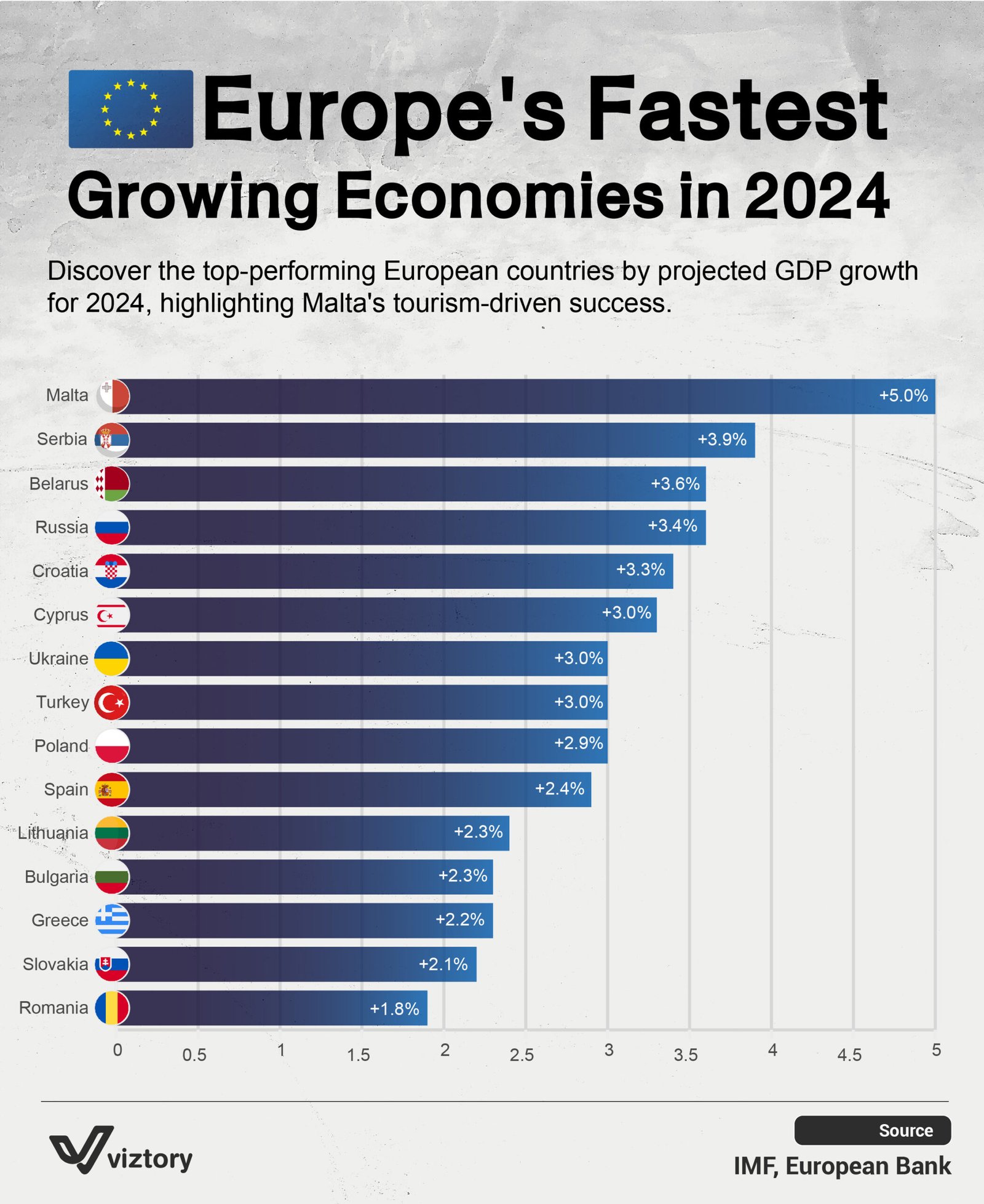Europe’s Fastest Growing Economies in 2024
-
Jan, Sat, 2025
Europe’s economic landscape in 2024 is set to showcase notable disparities in growth among its countries, with certain nations achieving remarkable progress due to diverse economic drivers. The chart highlights the top-performing economies by projected GDP growth, drawing attention to Malta’s exceptional performance with a growth forecast of 5.0%, primarily attributed to its booming tourism sector.
Malta: The Tourism Powerhouse
Leading the pack, Malta’s economy is expected to grow by 5.0% in 2024. The island nation continues to leverage its strategic location, vibrant tourism industry, and robust services sector. This growth reflects not only its appeal as a travel destination but also effective government policies to attract foreign investment and support small and medium enterprises (SMEs).
Eastern Europe’s Rising Stars
Serbia (+3.9%), Belarus (+3.6%), and Russia (+3.4%) feature prominently among the fastest-growing economies. These countries benefit from a mix of industrial output expansion, energy exports, and increasing foreign direct investments (FDI). Notably, Serbia’s infrastructure projects and growing tech industry have played a crucial role in accelerating its growth trajectory.
Tourism and Stability: The Mediterranean Advantage
Croatia (+3.3%), Cyprus (+3.0%), and Turkey (+3.0%) owe much of their economic progress to tourism, a sector rebounding strongly post-pandemic. Their geographical allure and ongoing diversification of their economies contribute to these impressive growth rates.
Eastern and Central Europe: Resilience and Recovery
Ukraine’s projected growth of 3.0% underscores its resilience amid ongoing challenges, while Poland (+2.9%) and Lithuania (+2.3%) demonstrate robust domestic demand and export-driven strategies. These countries continue to benefit from their integration into global supply chains and EU-backed funding programs.
Southern Europe: Modest Yet Steady Growth
Spain (+2.4%) and Greece (+2.2%) are on a steady growth path, supported by structural reforms, increased tourism, and recovery in the real estate and hospitality sectors. These nations emphasize innovation and renewable energy as pillars of future economic expansion.
Slower Growth: Slovakia and Romania
At the lower end of the spectrum, Slovakia (+2.1%) and Romania (+1.8%) face slower growth due to structural bottlenecks and weaker demand in key export markets. Nonetheless, both countries are pursuing policies to stimulate investment and address economic challenges.
Conclusion
The projected GDP growth rates for 2024 reveal a diverse economic picture across Europe. Countries like Malta, Serbia, and Belarus are leading the way, capitalizing on unique strengths such as tourism, industrial expansion, and strategic reforms. Meanwhile, the broader European economy is gradually recovering, driven by innovation, investment, and sustainable development initiatives. These growth trajectories offer valuable insights into the evolving economic dynamics across the continent.

